Past Exhibits
Desert Fables: Illustrations from "The Neotenic Queen"

Desert Fables: Illustrations from The Neotenic Queen, is a multimedia art exhibition featuring the writing and illustrations of Alejandro Canelos (author) and Rachel Ivanyi (illustrator) from their book, The Neotenic Queen: Tales of Sex and Survival in the Sonoran Desert.
This exhibition features over 28 original Natural history-styled watercolor paintings as seen in The Neotenic Queen, never before seen pencil sketches for these painted works, and other exciting materials that inspired this book!
The Imperial Valley Desert Museum, in partnership with the San Diego Natural History Museum, the U.S. Fish and Wildlife Service, and Dr. Deborah De La Riva, Entomologist with USDA's Animal and Plant Health Inspection Service, is proud to showcase several taxidermied animals and insects as part of Desert Fables: Illustrations from The Neotenic Queen.
Borderland Expressions: Narrative Change Through Arts in Imperial Valley

Borderland Expressions: Narrative Change Through Arts in Imperial Valley, is a multidisciplinary art exhibition showcasing the accomplishments of several artists who created their public campaigns/projects within the Imperial Valley through the funding of Far South/Border grants. FS/BN is a City of San Diego-led regional collaborative that supports artists and cultural practitioners working in service of the health and well-being of communities in San Diego and Imperial counties.
This exhibition showcased the artistic campaigns of Jose "Eduardo Kintero" Quintero (Imperial Valley Arts and Health), Sergio "Takito" Ojeda (Better to Light a Candle, Than to Curse the Darkness), and Paul Valdivia (Toxic Paradise).
This exhibition also includes the official reveal of IVDM’s newly created mural, also funded though a Far South/Border North grant campaign (Indigenous Voices, Decolonization Movement). This mural, created by a team of indigenous artists; Tolito Pardo, Amy Redfeather, Melissa Govea ‘Tochtlita’, and River Garza, celebrates local indigenous culture and history. The mural highlights the ever-present presence of the Kumeyaay people, a local indigenous group of the Southern California/Northern Baja area; the museum resides on traditional lands of the Kumeyaay.
Imperial Valley Desert Museum: Rocky Start to Firm Foundations

IMPERIAL VALLEY DESERT MUSEUM: Rocky Start to Firm Foundations is a multimedia history exhibition, celebrating the Museum’s Founding Father’s as well as encapsulating 51 years of history. This museum has endured much, from earthquakes, multiple moves, to the construction of a brand-new facility in the middle of the Yuha Desert! Since its inception in 1973, IVDM has hosted 30+ exhibitions to engage and educate the Imperial Valley public.
This exhibition featured:
A visual timeline, discussing the world at a glance, and the history of IVDM since its founding in 1973.
Desert Dive Facts.
Multiple display cases featuring historical artifacts from the Museum collections.
An IVDM Exhibition timeline.
Founding Father’s profile wall.
Jaime Servin, Artist and Past Curator of Exhibitions, profile wall.
Oral History Interviews and reading room area.
Native Voices | Native Truths: A Contemporary Experience

At IVDM we have long-celebrated indigenous stories and histories in antiquity, but have realized the need to highlight the contemporary indigenous experience. This exhibition marked a pivotal shift, aiming to forge deeper connections within the Imperial Valley community, particularly with those communities who have been systematically marginalized in spaces like museums.
A multimedia art exhibition, this exhibit joined together 17 indigenous artists from 13 different tribes across Southern California and Northern Baja California. This exhibit provided a platform for these artists to amplify their voices and perspectives through art.
A special thanks to Dr. Stan Rodriguez, Dr. Eric Tippeconnic, Monica Zavala, and Johnny Bear Contreras who served as our selection committee for this exhibit. Their invaluable support made this possible, and we are honored by their involvement.
Community is at the heart of IVDM, and we are humbled by the support of our indigenous community members. Their time, consideration, and words are instrumental. This exhibit would not have existed without them.
This exhibition was compromised of 17 different artists from 13 different tribes across Southern California and Northern Baja California. The artists who participated in this exhibition were:
Chinese Pioneers: Power and Politics in Exclusion Era Photographs
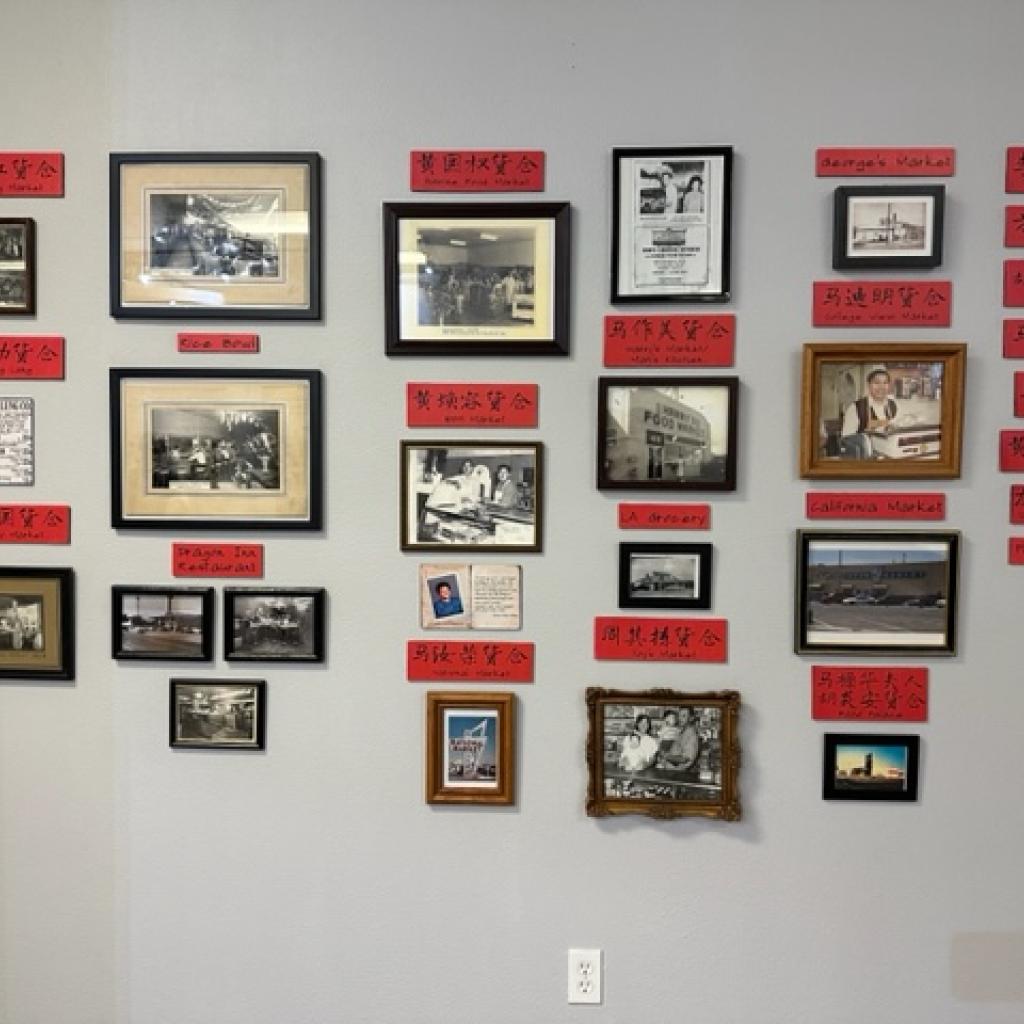
The exhibit began in the Gold Rush era, when significant numbers of Chinese people began to arrive in California. Anti-Chinese sentiment led to protests, violence, and vigilante expulsions up and down the West Coast. The Chinese Exclusion Act banned Chinese laborers from immigrating, becoming citizens, and tightened restrictions on previous residents reentering the country. It is against this backdrop that the exhibit considered the broad range of nineteenth-century imagery depicting the first generations of Chinese Californians and how visual culture influenced, aligned with, and diverged from the politics of Exclusion and the actions of the state.
Featured in the exhibit were examples of how different types of photography (studio portraits, street photography, and surveillance) reflect different facets of the Chinese experience. While studio portraits presented a dignified image of the subject, street photography highlighted the unequal social relations that existed between the Chinese and non-Chinese populations. Government headshots were used as a tool in the suppression, surveillance, and criminalization of Chinese residents through systems of registration and identification. Together, these varying styles of photography shaped the perception of the Chinese in the Exclusion Era years.
In addition, IVDM added information to the Exhibit related to the Chinese-American and Chinese-Mexican communities in El Centro and Mexicali during this era.
Exhibition Support:
Chinese Pioneers is an exhibit by the California Historical Society and touring through Exhibit Envoy. Institutional support provided by San Francisco Grants for the Arts and Yerba Buena Community Benefit District. The Henry Mayo Newhall Foundation supported the first 6 bookings of this exhibition.
About the California Historical Society:
The California Historical Society (CHS), the official state historical society of California, has been collecting, sharing, and honoring the extraordinarily diverse stories from throughout the state for 150 years. Headquartered in San Francisco with support from California Humanities, the National Endowment for the Humanities, San Francisco Grants for the Arts, Yerba Buena Community Benefit District, and all of its donors and members across the state, the nonprofit organization works statewide to inspire and empower people to make California’s past a meaningful part of their contemporary lives.
At Exhibit Envoy:
Exhibit Envoy provides traveling exhibitions and professional services to museums throughout California. For more information, visit www.exhibitenvoy.org.
Kumeyaay Cosmology (Maay Uuyow: Sky Knowledge)
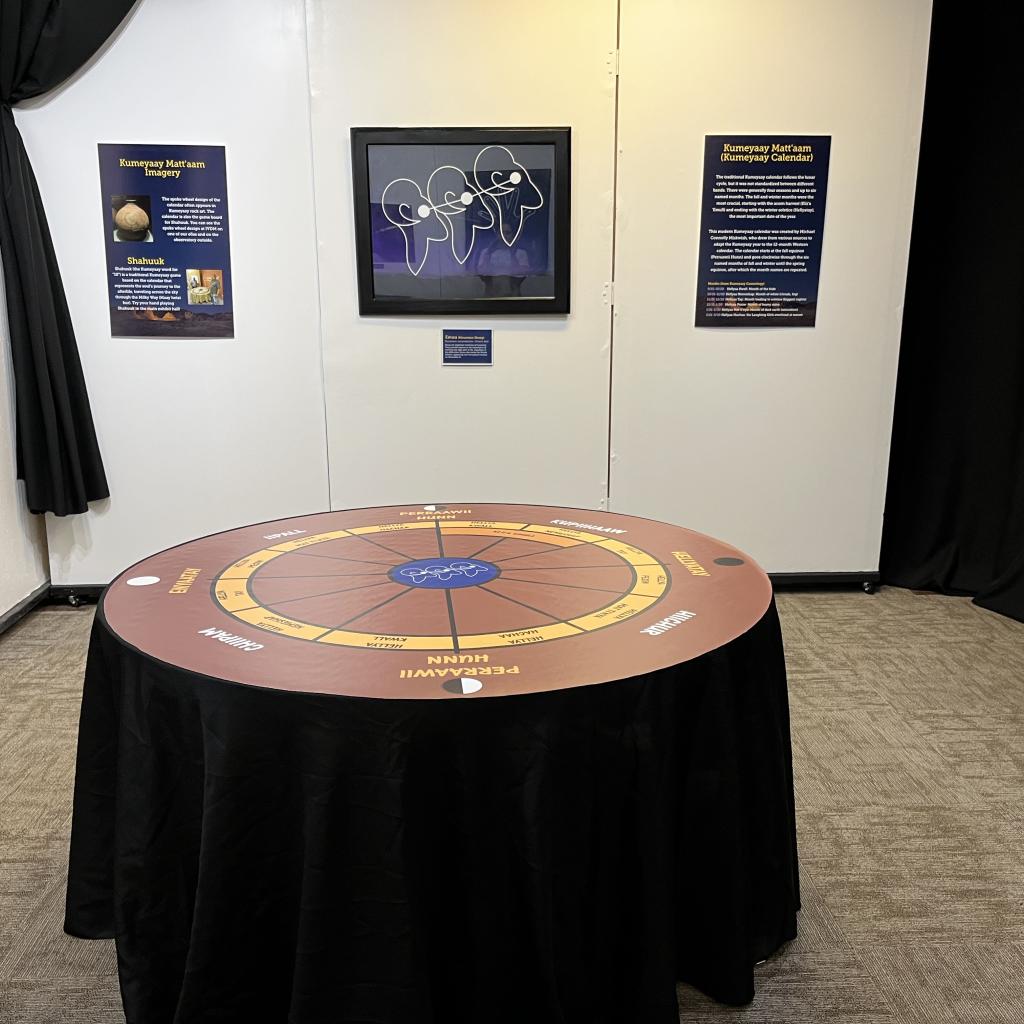
Many of the constellations we know and gaze upon today, were also observed by the Kumeyaay. While the grouping and patterns of the stars are ones we would recognize, the Kumeyaay named and identified them differently. These constellations represent important lessons to the Kumeyaay and serve as visual reminders of greater wisdom that extends beyond the earthly shell. They were also used as moral and ethical guides, divided into groups such as the Watchers and Deliverers of Punishment.
Today, evidence of Kumeyaay cosmology is ever present in the landscape of Imperial Valley. Incorporated into earthen arts such geoglyphs, pictographs, and petroglyphs, and even painted onto pottery, the practice of observing the night sky played an important role in Kumeyaay beliefs and traditions.
In celebration of the Kumeyaay’s recognition and special connection to meteors, IVDM celebrated the Delta Aquarids Meteor Shower through our Summer Stargazing Event on Friday July 29, 2022.
To learn more about this tradition and its continued importance, read Michael Connolly Miskwish’s book Maay Uuyow: Kumeyaay Cosmology.
Desert Shells
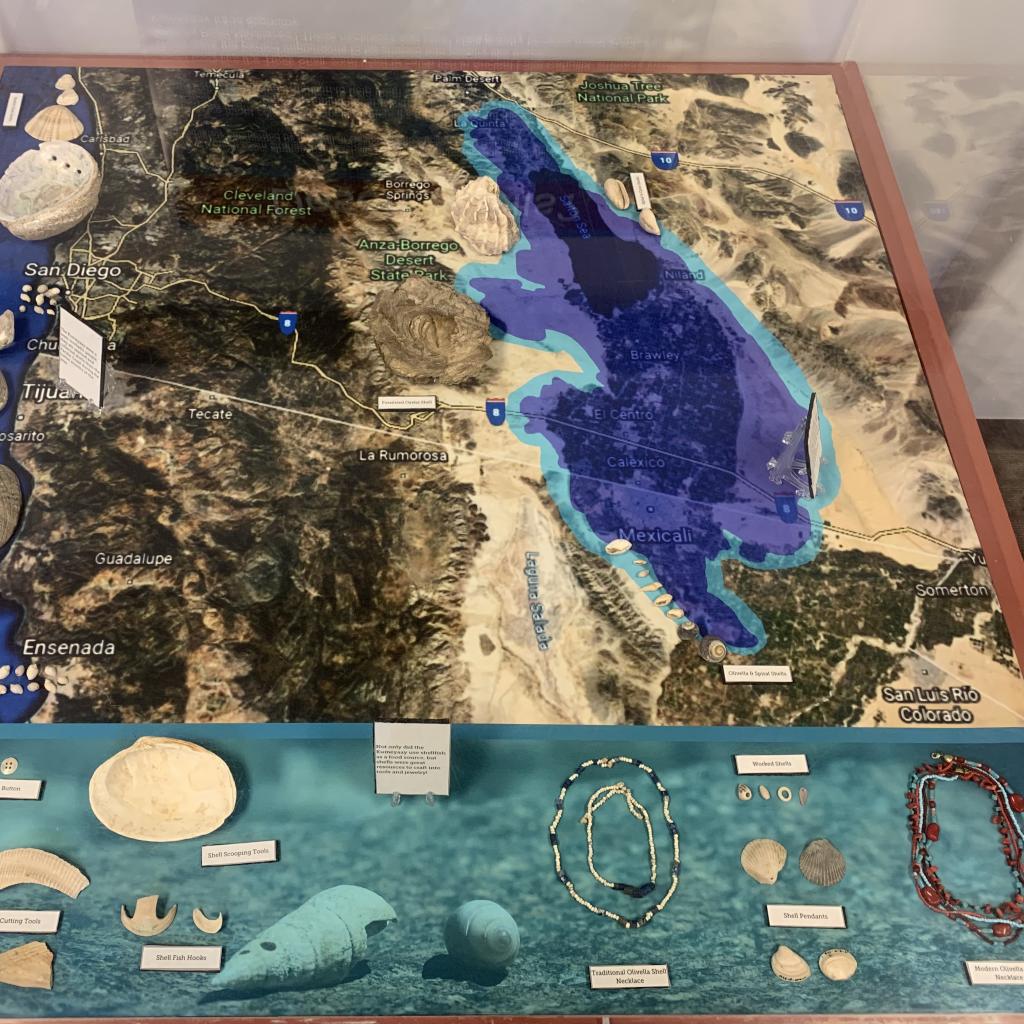
While it might seem strange that seashells can be found throughout Imperial Valley, the Valley used to be completely submerged by the Gulf of California and Ancient Lake Cahuilla!
Today we might collect a seashell because it's fun to do so, but the Kumeyaay had more practical reasons. Between eating the shellfish and crafting the remaining shells, the Kumeyaay used every part of the organism to help them survive in the Desert! Shell tools like the 'Hook Shell' were used to catch fish in Ancient Lake Cahuilla, whereas spiral shells were the perfect implements to be shaped into jewelry like these 'Olivella Bead-Necklaces! These necklaces and other shell jewelry became major staples in the Kumeyaay trade economy.
Lost and Returned, Kumeyaay Baskets of McCain Valley
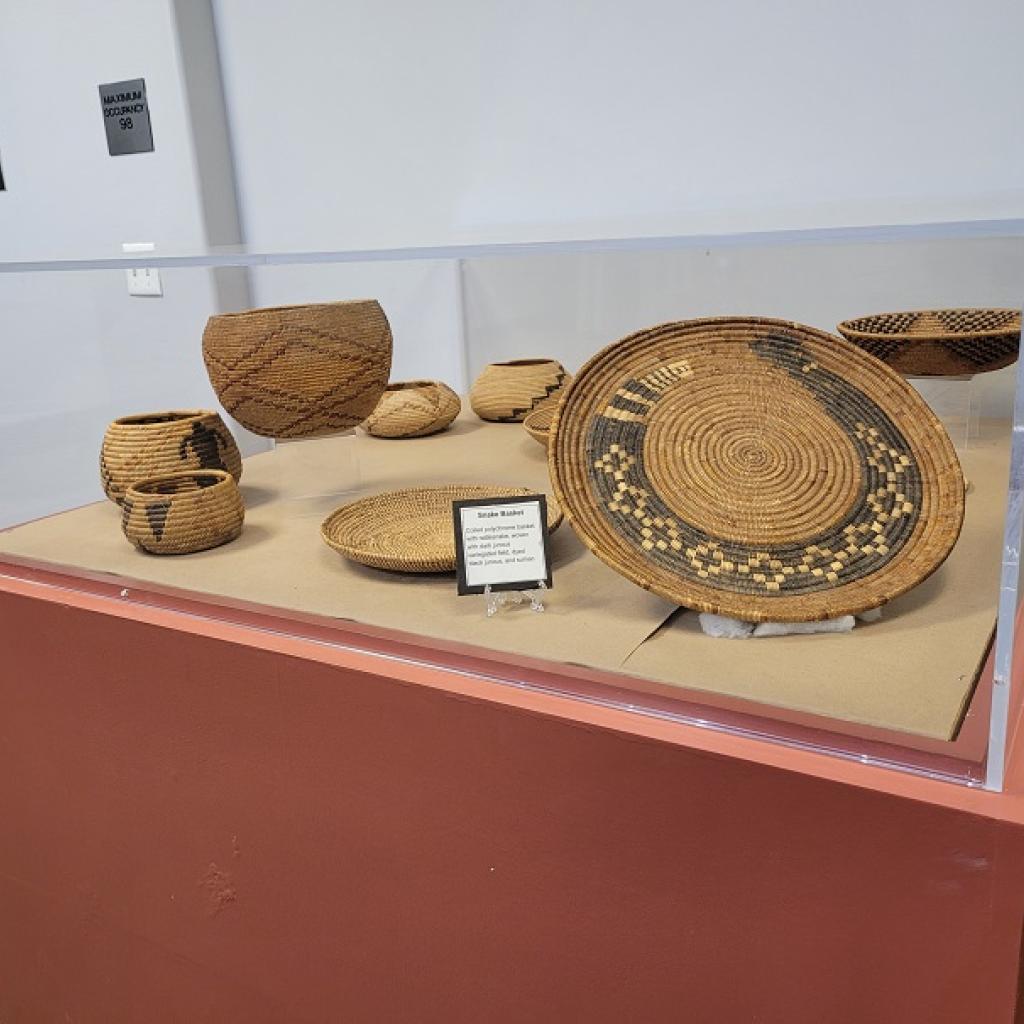
The Kumeyaay nation is comprised of many tribes that stretch from as far East as modern day Yuma, as North as Oceanside, and as South as Ensenada. To be able to traverse these great distances, the Kumeyaay were semi-nomadic and thus needed ways to carry their supplies. While they were masterful potters, Ollas were often too heavy for long trips, so for hundreds of years, woven baskets became widely used as storage containers.
Once the Spanish arrived in the 1700's, the Kumeyaay were forced to craft these baskets as a source of industry and income. This continued throughout the Spanish occupation and even while American ranchers moved into the region. This exhibit showcases objects that were all returned from the McCain Valley which is only 30 miles West of the museum. While still being practical to use and store objects within, the more complicated designs on these baskets highlight the immense talent and patience of the women who crafted them.
Life Along the Border
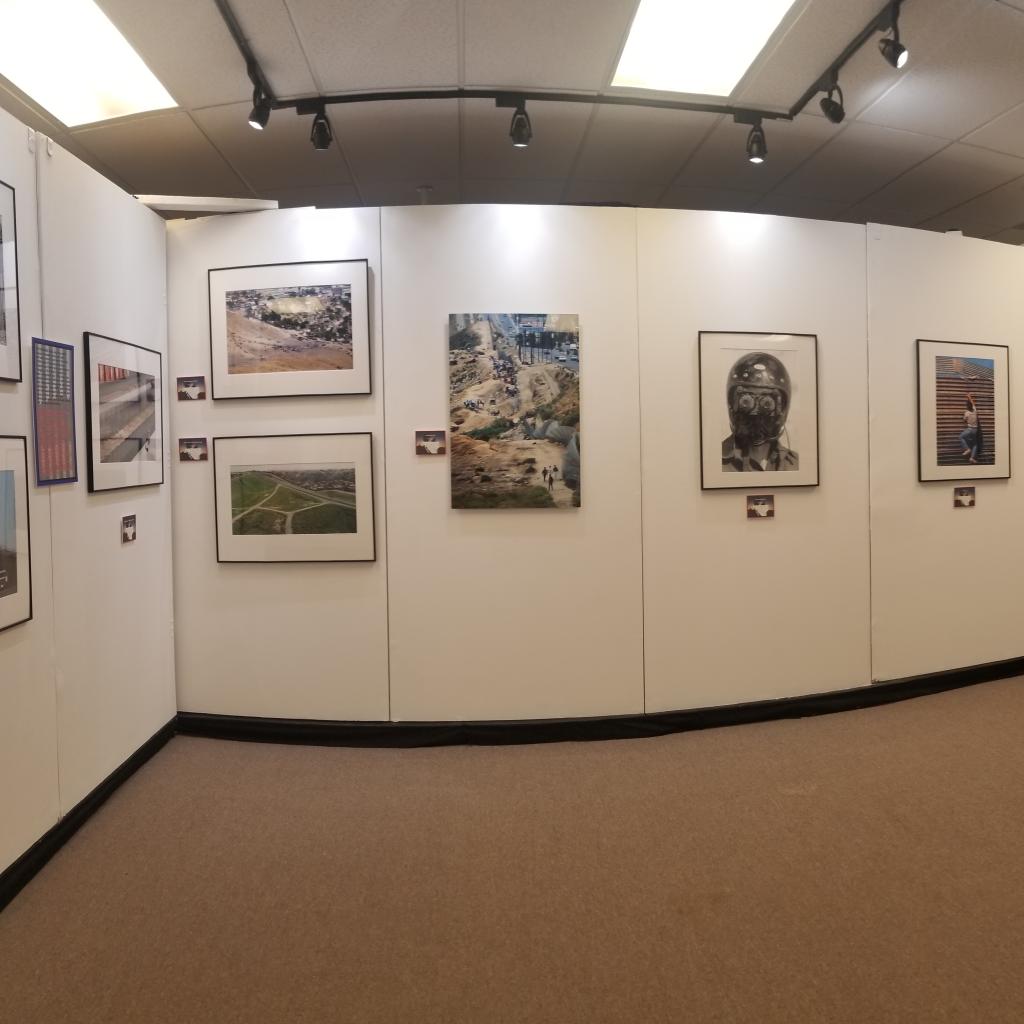
Intended to provide a neutral and balanced narrative, Life Along The Border features 41 photographs divided into four sections, touching on various aspects that affect the lives of people living along the border. These include difficulties many people face in Mexico and possible motivations they may have in wanting to immigrate to the US, as well as capturing the lives of immigrants choosing to live in the US and redefining what it means to be an American.
The Impossible Railroad
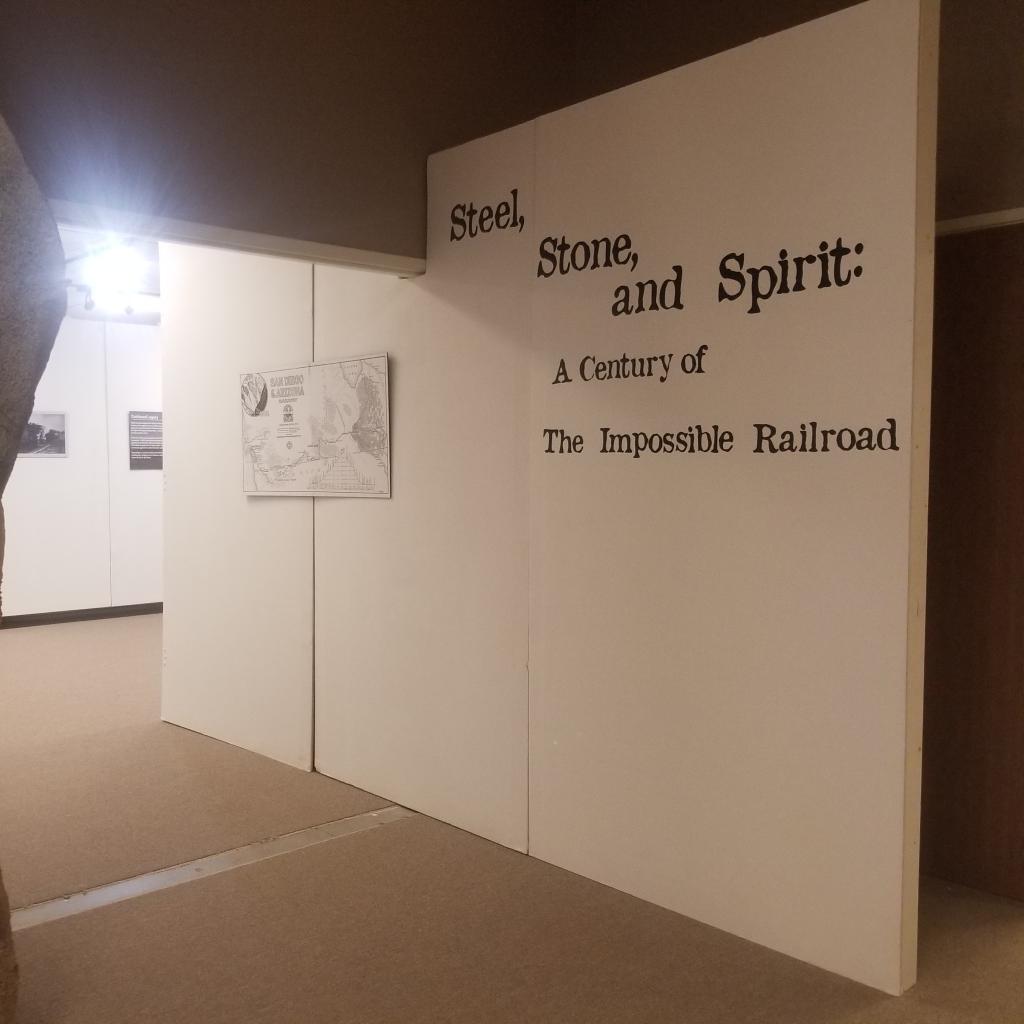
The impossible railroad has been part of the Imperial Valley for about 100 years. While the railroad was officially finished on Nov. 15, 1919; however, only parts of it have been open since hurricane Kathleen in 1976 which completely devastated the railroad. The impossible railroad used to carry freight and passengers from San Diego to Yuma making stops in Calexico. Generating enormous amounts of revenue and making San Diego the main port in the area, while it was open, instead of Los Angeles. The railroad had many hurdles during construction all being caused by the land of extremes and its intense conditions in the mountain passes and the desert.